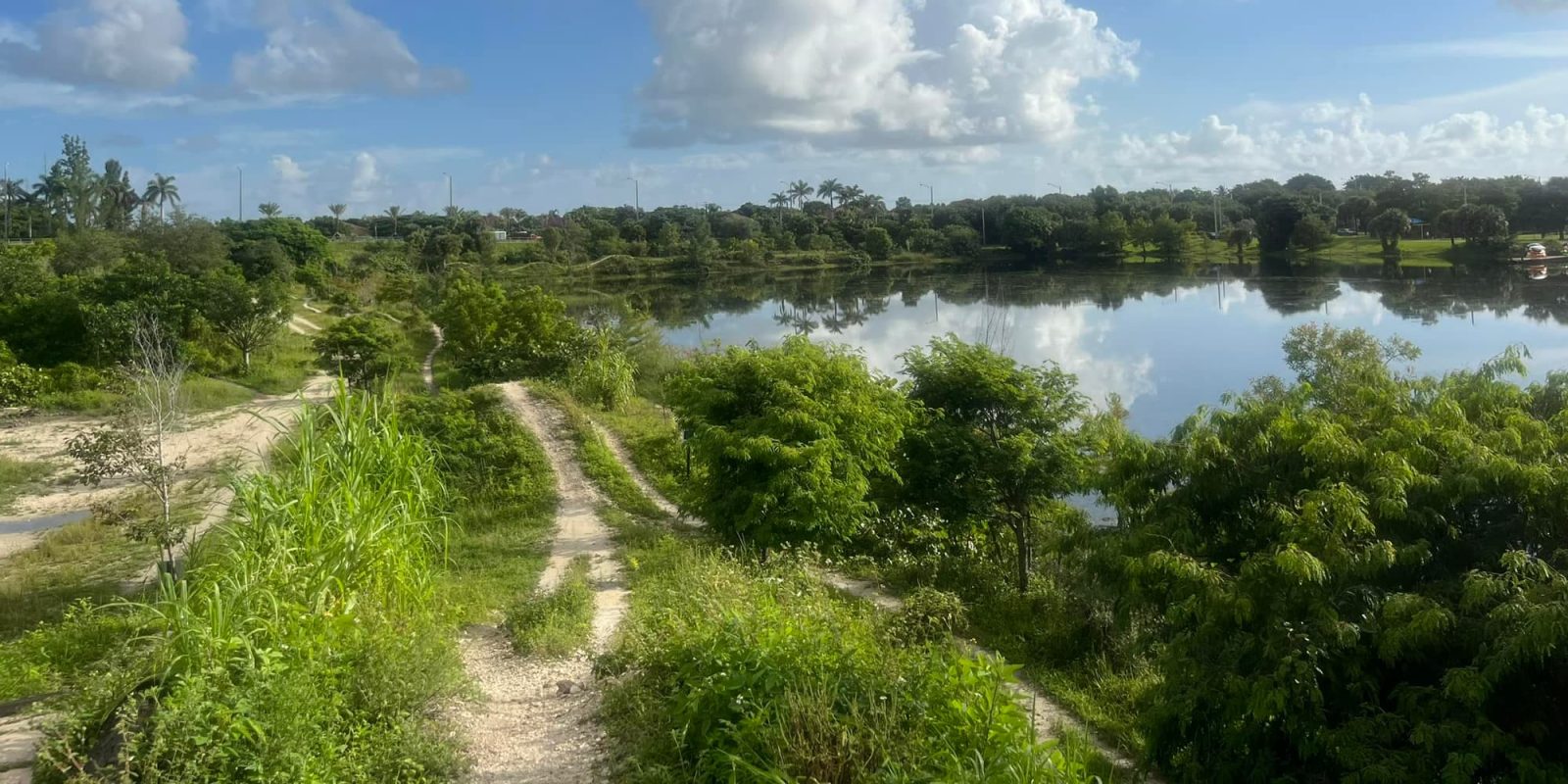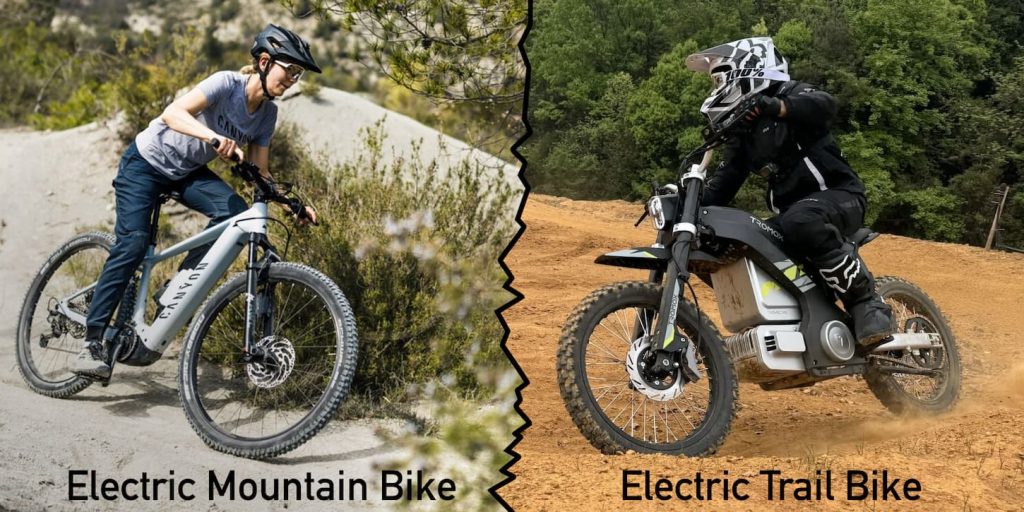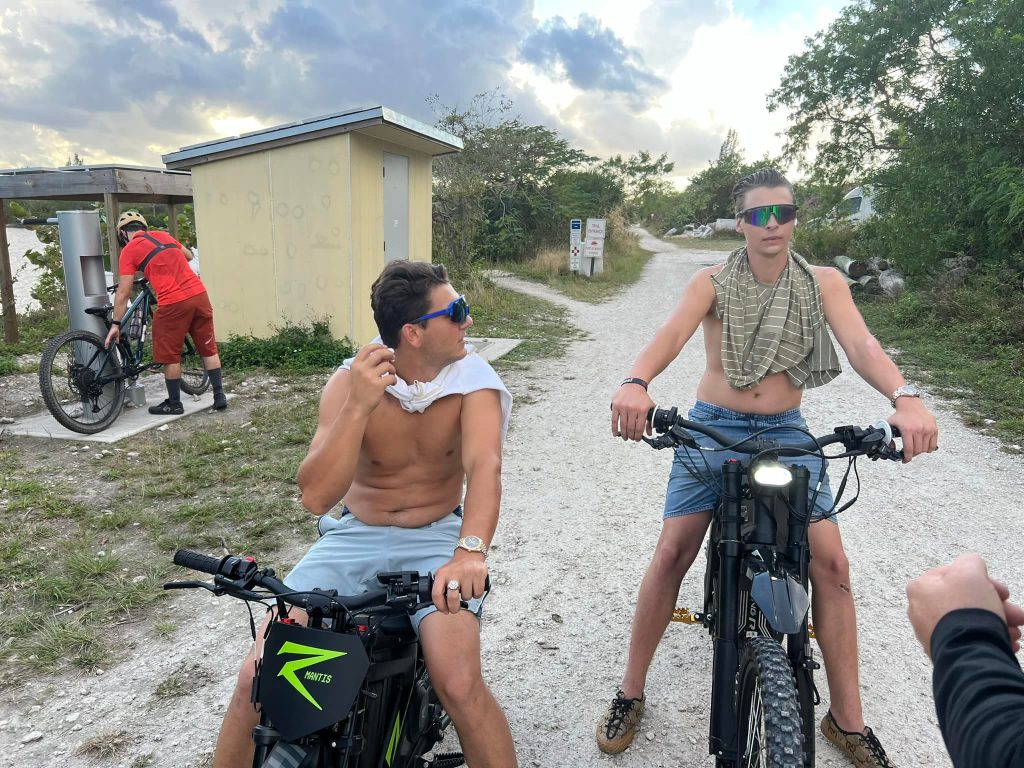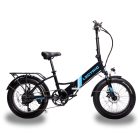
As electric trail bikes like Sur Rons and Talarias gain popularity among off-road enthusiasts, a growing conflict is emerging on mountain bike trails. These powerful machines, capable of speeds and torque far beyond that of a traditional mountain bike, are raising concerns among trail users, land managers, and environmental advocates.
First though, some semantical housekeeping. The term “e-bike” is often used to cast a pretty wide net, encompassing everything from cute little folder e-bikes to much more powerful electric motorbikes. Similar to the way motorcycle riders often talk about their “bikes”, the term “e-bike” in colloquial discussion is just that: colloquial.
The term “electric bicycle”, on the other hand, is an actual regulatory designation that lets most electric mountain bikes and other commuter-style e-bikes fit under the legal definition of bicycles. To oversimplify it, the e-bike that looks like a typical mountain bike is an electric bicycle. The one that looks like a motorcycle or dirt bike is probably not an electric bicycle.
That’s an important distinction because it’s becoming a major issue on mountain bike trails all over North America and in many other parts of the world.
Unlike a typical 50 lb electric mountain bike that can output an amount of power roughly in line with a healthy adult, electric motorbikes like those from Sur Ron, Talaria, and other brands can weigh 2-3x as much while outputting 5-10x the amount of power as a typical electric mountain bike. They’re a blast to ride, but like many things in life, there’s a time and a place. Their proliferation of Sur Ron-style electric motorbikes has been wreaking havoc on mountain bike trails where such bikes are almost always illegal.

Mountain bike trails are carefully designed to handle the wear and tear of typical mountain bikes. Normal electric mountain bikes, which have electric motor power levels similar to human pedaling power, typically mesh fairly well with mountain bike trails.
However, the high torque and weight of bikes like Sur Rons and Talarias can wreak havoc on these trails. Such power motorbikes are often responsible for increased erosion, deeper ruts, and widening of trails in areas where these bikes are being used. It’s often not just a matter of normal trail wear, but rather damage that can take significant time and resources to repair.
Trail widening, often caused by riders veering off designated paths, also leads to environmental degradation, harming vegetation and wildlife habitats.
Mountain bike trails are often designated for non-motorized use, and electric trail bikes with such high-power motors and large tires are almost never allowed. Some mountain bike parks have begun accepting Class 1, 2, and/or 3 e-bikes, but Sur Rons and Talarias are almost always prohibited due to their much higher performance. Their power and speed far exceed what’s allowed for e-bikes under most regulations, putting them squarely in the category of motorized vehicles like dirt bikes and ATVs.
Weight also plays a major role. The risk of serious injuries is also higher due to the mass and momentum of these larger machines. With top speeds often exceeding 40 mph (64 km/h), electric motorbikes are significantly faster than traditional electric bicycles or pedal bikes. This speed disparity creates hazardous conditions for slower-moving trail users.
When combined with the fact that many riders of powerful electric motorbikes are new to the sport after buying or being gifted a Sur Ron-style bike, that high speed can be even more dangerous in the hands of a novice rider.

Just last week, two riders on Talarias were kicked out of Quiet Waters Park Mountain Bike Trails in South Florida, a volunteer-maintained mountain bike trail system that permits Class 1 electric bicycles (e-bikes that are pedal-assisted up to 20 mph or 32 km/h and 750W of power).
As a lead volunteer in the trail building and maintenance team at the park, Nick Calabro was there when the riders were confronted by a county worker and asked to leave. “Multiple riders reported interactions with them, from encountering them riding in the wrong direction to not wearing required helmets, and of course not even being allowed to ride those bikes on the trails,” Calabro explained to Electrek.
According to Calabro, the pair had purchased trail day passes for mountain bike riders, but then brought their much larger and more powerful Talaria motorbikes into the park.
The two were seen on video attempting to fight the trail volunteers after being asked to leave the park. The interaction took place just a few yards from a sign with the posted rules of the park (seen at 0:11 in the video below).
Such interactions represent a small but growing phenomenon on mountain bike trails, where traditional mountain bike culture and trail etiquette clash head-on with Sur Ron riders unfamiliar with the practices and terrain.
Fortunately, many other locations exist that are ideal for electric motorbikes that fall outside the realm of traditional electric mountain bikes.
Off-highway vehicle (OHV) trails that are designed for motorized vehicles like UTVs, ATVs, and dirt bikes, are ideal locations to ride powerful electric trail bikes. Such trails are built with higher power vehicles in mind, and aren’t as delicate as mountain bike trails.
Top comment by ShoeShineBoy
I ride an e-MTB… Trek Rail 9.9. Class 1 that you must pedal to ride with assisted speed of 20 mph. It’s a blast on the local trails so I’m not against the concept of e-MTB within reason.
That being said, I was nearly run over by one of these electric motorcycles on our otherwise serene, multi use trails near my home that specific disallow anything but class 1 e-bikes. The guy drove me off trail and into a large juniper. I sustained a jaggged cut on my forearm that required 10 stitches. Where was he? Gone in a flash. Never even stopped to see if I was okay.
As was noted by Leonard, the staffing of the USFS, the State and the local volunteer organizations are not equipped to deal with this. Peer pressure is needed but unfortunately you can run into bozos like this and end up in an altercation. The guy the ran me off the trail doesn’t want to meet in move favorable conditions.
Forestry/backcountry dirt roads, gravel roads, and fire roads can provide a mix of typical off-road riding and exploration, though don’t offer the same type of topography.
Motocross tracks are also excellent locations for Sur Ron and Talaria-style bikes, which can use the features for more thrilling jumps and berm riding.
Private land (with the landowner’s permission) is perhaps one of the best places for these powerful electric motorbikes due to their ability to overland and explore areas beyond the beaten path.
As the popularity of powerful electric trail bikes continues to rise, the question of how and where they should be ridden remains a contentious one. But with their ability to ride much rougher terrain as well as their increased impact on that terrain, one thing is for sure: delicate mountain bike trails aren’t the place for such powerful bikes.
FTC: We use income earning auto affiliate links. More.




Comments